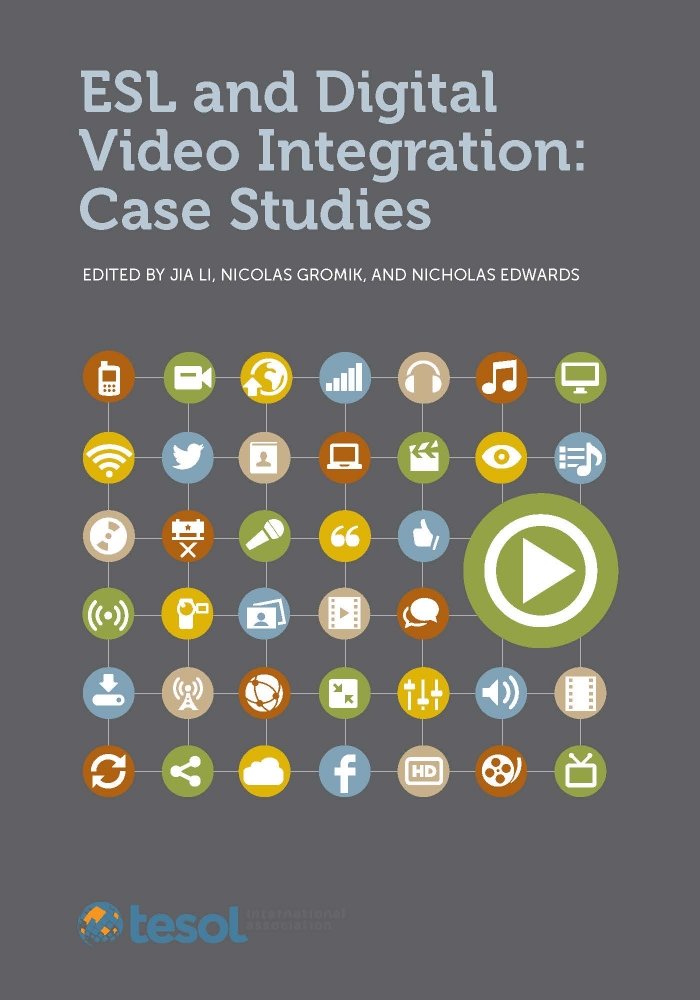Virtual Culture Shock: Understanding Your Online ELL
by Anne Alexander
 The dynamics of the American classroom have always niggled international students, but, thanks to the web, the potential to flummox vast numbers of English learners has never been greater. For many of these students, an online course may be their first brush with certain tenets of a Western-style education that, to us, are second-nature: participation, student-to-student interaction, and opinion sharing. To boot, they have to adapt to this new “culture of learning,” defined as the “taken-for-granted frameworks of expectations, attitudes, values, and beliefs about how to teach or learn successfully” (Jin & Cortazzi, 2006, p. 9) while operating in the context-reduced environment of a laptop. The dynamics of the American classroom have always niggled international students, but, thanks to the web, the potential to flummox vast numbers of English learners has never been greater. For many of these students, an online course may be their first brush with certain tenets of a Western-style education that, to us, are second-nature: participation, student-to-student interaction, and opinion sharing. To boot, they have to adapt to this new “culture of learning,” defined as the “taken-for-granted frameworks of expectations, attitudes, values, and beliefs about how to teach or learn successfully” (Jin & Cortazzi, 2006, p. 9) while operating in the context-reduced environment of a laptop.
Culture shock isn’t restricted to students sitting in traditional classrooms; it strikes online students as a kind of virtual culture shock. It is important for English language teachers to increase their own awareness of the classroom-related cultural travails of far-flung English language learners and to acquaint themselves with a few strategies on how to help students adjust.
Set the Level of Formality
The American classroom is more casual and informal than elsewhere, but it has an abstruse hierarchy: It may look flat, but it’s not.
- Much as you would like to engender a relaxed and collegial environment, be aware that students familiar only with a rigid classroom structure may conflate “informal” with “not credible.”
- Tell students how you would like to be addressed. Caution: being on a first-name basis with a teacher is likely to make many EFL students uncomfortable and perhaps ding your respectability.
- Establish the level of language decorum you expect: Is slang acceptable? Textese (r u goin 2 b online 2 nite?)? Do students need to thank others for responding to their posts? Is friendly banter in the forums appropriate?
Add Context to Low-Context Communication
Online students are trying not only to learn the English language, but they are doing so in a context-reduced environment (Sadykova & Dautermann, 2009). Because most online courses are conducted exclusively in writing, students can’t make inferences about their instructor’s or classmates’ intended meaning from body language or tone of voice, nor do they a have a teacher who can clarify meaning in real-time.
- The best way to add context to an online course is to add video. Present your syllabus, lectures, assignments, and announcements via a free video conferencing platform like Google+ Hangouts. You can share your PowerPoint slides and “write on the board,” streaming your image and audio from your webcam. Your students will be able to watch your facial expressions and hear your tone of voice as you discuss your material, helping them to decode your meaning. Upload the recorded video so that students can view it as many times as they need to.
- Better yet, present your material before a live, virtual audience. Even if your students are 12 time zones away, invite them to attend your presentation, scheduling your broadcast using a group Google Calendar in GST. With everyone “live,” you can entertain questions and hold discussions, if you choose. You might be surprised at the turnout: online students may be quite eager to be in the “studio audience” of a recording by their cool, English-speaking teacher. Even if there’s just one student online with you, your lecture will be more energetic and authentic. Immediately afterwards, upload the recorded video for the rest of the class.
Facilitate Productive Relationships
Online students are separated geographically and temporally from their instructor and one another. Those from field-dependent cultures in Latin America and Asia may be unaccustomed to working individually and can feel lonely (Tan, Nabb, Aagard, & Kioh, 2010). Combat isolation by creating a virtual community.
- Break the ice by getting students to interact with one another as early in the course as possible (Murugaiah & Thang, 2010).
- Provide opportunities for students to work together either asynchronously or synchronously using Google+ Hangouts.
- Be aware that the posting of personal bios and photographs, as well as undirected “chat" (Sadykova & Dautermann, 2009) and the “getting to know you” activities ubiquitous in traditional English language courses may seem frivolous to online students (Tan et. al., 2010). Instead, ensure that interaction between students is purposeful, assigning activities such as peer editing or pair-shares; personal connections will come later, naturally.
Model and Provide Examples of Supported Opinions
Online students may be unaccustomed to initiating discussion, taking a position, critiquing others, and asking questions. Create a dynamic and respectful virtual environment in which your students can thrive.
- Provide a sample portfolio (written and video) of the kinds of opinion-based posts you expect.
- Be direct and nonjudgmental when explaining linear Western rhetorical conventions, as your students may be familiar only with styles of communication in which meaning is implied or conveyed circuitously (Sadykova & Dautermann, 2009).
- With peer editing, don’t settle for exclusively positive feedback (E.g., “That was great!”)
- Be direct: Couching constructive criticism in the form of praise for the good and “suggestions” for the not-so-good may be interpreted as mere advice that need not be followed (Sadykova & Dautermann, 2009).
Respect Your Students’ Time Investment
Personal accountability is higher in an online course than in traditional classes; would-be slackers can’t skate by without reading the material and/or participating in discussions. And, because most online courses are conducted entirely in writing, students spend lots—lots—of time composing and editing.
- Reduce the amount of writing your students have to do in the first place by assigning tasks that can be completed by video.
- Lessen the anxiety of posting poor writing (Murugaiah & Thang, 2010). If your institution uses Moodle or a similar system which disallows editing after 30 minutes, switch to Google Drive, where students can edit their posts if they need to.
- Watch your colloquialisms: Online students spend a considerable amount of time deciphering slang, idioms, and metaphors (Tan et. al., 2010). In a virtual environment, it’s more difficult for English learners to delineate the boundaries of a seemingly nonsensical phrase, making it harder to look up, much less to understand.
- Advise your students to take just one class at a time (yours) if this is their first online class (Tan et al., 2010). This will allow them to become used to the online class format and help prevent them from getting overwhelmed.
Be Technologically Aware
No matter how “techknowledgable” your students are, they may be novices at online education (Murugaiah & Thang, 2010).
- Realize that they are dependent on a technological system that is operated in English (Sadykova & Dautermann, 2009); imagine if you were to take an online Uyghur language course using technology that was itself entirely in Uyghur.
- Resolve any and all technical issues immediately: technology is the online student’s lifeline. (Murugaiah & Thang, 2010)
- Learn and explain your institution’s privacy policy. Some students may be from areas of the world where it is not unreasonable to have trust issues about who has the ability to read or listen in on their online communication.
- Don’t just hit the “send” button: use e-mail receipts, and encourage your students to use them; this will ensure there is a virtual paper trail and increase accountability from all parties.
- Provide an alternate e-mail address, and, if you feel comfortable with it, a phone number, so your students can contact you if the system goes down—or perhaps just to say “hi.”
References
Jin, L., & Cortazzi, M. (2006). Changing practices in Chinese cultures of learning. Language, Culture and Curriculum, 19(1), 5–20.
Murugaiah, P., & Thang, S. (2010). Development of interactive and reflective learning among Malaysian online distant learners: An ESL instructor's experience. International Review of Research in Open and Distance Learning, 11(3), 21–41.
Sadykova, G., & Dautermann, J. (2009). Crossing cultures and borders in international online distance higher education. Journal of Asynchronous Learning Networks, 13(2), 89–114.
Tan, F., Nabb, L., Aagard, S., & Kioh, K. (2010). International ESL graduate student perceptions of online learning in the context of second language acquisition and culturally responsive facilitation. Adult Learning, 21(1/2), 9–14.
____________________
Anne Alexander is a graduate student in the TESOL program at CSU Fullerton. She is conducting a 2-year self-experiment to measure how much Japanese she can learn exclusively through music.
TC Monthly Giveaway Congratulations to Erin-Kate Sousa of Maine, USA, for being the winner of the June 2013 TESOL Connections Monthly Giveaway. Erin-Kate won a free TESOL gift membership for a friend or colleague.
This month, TESOL is giving away a free
Speaking Book Set!
Click here to enter
Drawing closes 29 July 2013, 11:59 pm EST
TESOL Blogs Interested in writing a blog for TESOL?
Contact Tomiko Breland with your idea or for details.
Check out the latest TESOL Blogs:
|
TESOL and the CCSS: Let’s Not Give Up, by Rosa Aronson
 Recently, the media have reported a mounting chorus against the U.S. Common Core State Standards (CCSS). Opponents of the CCSS state that the initiative is an intrusion of the Federal Government into local authority, that it’s really an attempt to impose a national curriculum, and that it simply costs too much to implement. Recently, the media have reported a mounting chorus against the U.S. Common Core State Standards (CCSS). Opponents of the CCSS state that the initiative is an intrusion of the Federal Government into local authority, that it’s really an attempt to impose a national curriculum, and that it simply costs too much to implement.
Personally, I find it hard to buy into many of these arguments because they are built on inaccuracies. Read More. |
|
Online Dictionaries for English Learners, by Tara Arntsen
 While I do not know how popular online dictionaries are with teachers and students, I have noticed that my own students often rely on translators to help them with new vocabulary. Translators definitely serve a purpose and students perceive them as the best resource for learning new words because they can see the new word in both their native language and English. Unfortunately, translators are not all created equally and I have seen some rather odd translations, so I recommend that my students, especially at the higher levels, use online dictionaries to help them. Here I’ll talk about some of the online dictionaries I have found, but it is by no means a comprehensive list. Read More. While I do not know how popular online dictionaries are with teachers and students, I have noticed that my own students often rely on translators to help them with new vocabulary. Translators definitely serve a purpose and students perceive them as the best resource for learning new words because they can see the new word in both their native language and English. Unfortunately, translators are not all created equally and I have seen some rather odd translations, so I recommend that my students, especially at the higher levels, use online dictionaries to help them. Here I’ll talk about some of the online dictionaries I have found, but it is by no means a comprehensive list. Read More.
|
|
Check It Out! Resources for Adult ELLs at the Library, by Alexandra Lowe
 For well over a century, American public libraries have offered a gateway to immigrants learning English. In some cities, free library-based ESL classes are so over-subscribed that lotteries are held to determine who gets in. Countless additional ELLs participate in library-based conversation groups. For well over a century, American public libraries have offered a gateway to immigrants learning English. In some cities, free library-based ESL classes are so over-subscribed that lotteries are held to determine who gets in. Countless additional ELLs participate in library-based conversation groups.
Yet, remarkably, many ELLs who take English classes elsewhere in the U.S. are unaware of what a treasure trove awaits them at their local public library. And thanks to the Internet, certain of the public libraries’ resources may even be accessible well beyond America’s shores to students studying English around the world. Here, in a nutshell, are some of the ways in which I introduce my adult ESL students to what their local public library has to offer: Read More. |
|
“Simplicity is the Ultimate Sophistication,” by Elena Shvidko
 “Simplicity is the Ultimate Sophistication”, a quote from Leonardo da Vinci, for me refers to the simplicity of language, which I would like to reflect on in today’s blog entry. I’ll start with a personal experience. When I was working on my master’s thesis a couple of years ago, I remember the feedback that I received from my academic advisor after he handed back to me the first several pages of my first draft. The word that he used sounded almost hurtful at that moment. He said that the language of my writing was not “crisp”! And then he added, “Less is more.” “Simplicity is the Ultimate Sophistication”, a quote from Leonardo da Vinci, for me refers to the simplicity of language, which I would like to reflect on in today’s blog entry. I’ll start with a personal experience. When I was working on my master’s thesis a couple of years ago, I remember the feedback that I received from my academic advisor after he handed back to me the first several pages of my first draft. The word that he used sounded almost hurtful at that moment. He said that the language of my writing was not “crisp”! And then he added, “Less is more.”
At that moment, I was not quite sure if I understood what the expression “less is more meant,” as I believed that my thesis was supposed to be written in academic language, which, according to me, entailed complicated syntactic structures and long words. Read More. |
TESOL Bookstore

Looking for Projects to Engage Students and Have Fun?
Incorporate Video!
 ESL and Digital Video Integration: Case Studies ESL and Digital Video Integration: Case Studies
Edited by Jia Li, Nicolas Gromik, and Nicholas Edwards
It should come as no surprise that digital video technology is of particular interest to English language learners; students are drawn to its visual appeal and vibrant creative potential. The seven original case studies in this book demonstrate how video can be an effective and powerful tool to create fluid, fun, interactive, and collaborative learning environments.
Read a free chapter.
Order today from TESOL Press
|
 |
|
|
 |
| Adjunct EFL Instructor (Fall Semester in China), Clark University, Jinan, Shandong Province, China
Disney English Foreign Trainer, Disney English, Multiple cities in China
Full-Time Lecturer, Department of Linguistics (TESOL area), Southern Illinois University Carbondale, Illinois, USA
Want to post your open positions to Job Link? Click here.
To browse all of TESOL's job postings, check out the TESOL Career Center. |
 |
|
 |
|